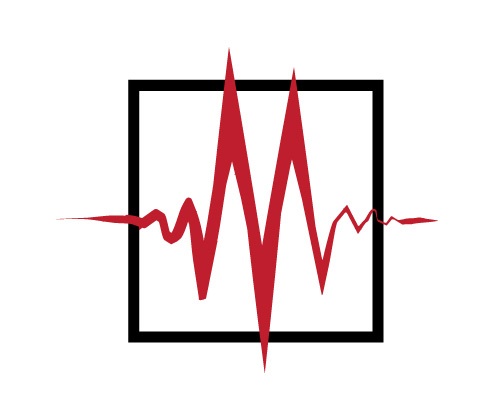- Categories:
Booksellers Explore Marketing Strategies That “Move the Needle”
 More than 40 booksellers attended the Monday afternoon session “Marketing That Moves the Needle” at Winter Institute 8, where they were asked what motivated them to come to session. In the weeks leading up to the event, ABA launched an intensive marketing campaign to explore the effectiveness of various marketing strategies typically implemented by booksellers.
More than 40 booksellers attended the Monday afternoon session “Marketing That Moves the Needle” at Winter Institute 8, where they were asked what motivated them to come to session. In the weeks leading up to the event, ABA launched an intensive marketing campaign to explore the effectiveness of various marketing strategies typically implemented by booksellers.
Prior to the Winter Institute, the session itself was advertised to all Wi8 attendees through e-mails, Facebook, and Twitter. It was branded with its own logo, which was visible on handouts, signs, and pencils throughout Wi8 in the days leading up to the session. Booksellers were also wooed with a chance to win an hour-long design consultation with ABA Marketing Director Greg Galloway and posters were given to the first 10 session attendees.
 |
|
Meg Smith and panelists Julie Wernersbach and Jill Miner look at the results of the poll. |
Using Poll Everywhere, a system that utilizes mobile phones and the web to tabulate audience responses, ABA Membership and Marketing Officer Meg Smith, the session moderator, asked booksellers about each of ABA’s specific marketing efforts. She was quick to underscore, however, that the percentages really did not matter — the exercise was aimed at fueling conversation by putting booksellers in the place of customers. “Marketing can be as intuitive as you want it to be,” Smith stressed, before turning to the poll results. “Everyone responds differently, and after we go through this, we’ll look to Julie and Jill to see what can be applied to bookstores.”
 |
|
Using cell phones and laptops, booksellers participate in the poll. |
While coupons for a free poster in all Wi8 attendees’ welcome bags drew 10 early booksellers, the poll showed that the majority of those present first learned about the session in the program schedule. Though it was the highest-attended session during its time slot, the results of the poll suggested that this had more to do with the fact that there was a built-in audience for the panel, as 75 percent of the group answered that their own interest in marketing was the final driver in their decision to attend. While 70 percent were aware of the marketing efforts going on, 83 percent answered they would have attended the session regardless of its promotion. Though the creation of the logo piqued some booksellers’ interest, it confused others, making them wonder why it was different from the rest of the institute’s programming, or made them think the session was sponsored by a third party.
Following the poll, panelists Julie Wernersbach of Austin’s BookPeople and Jill Miner, owner of Saturn Booksellers in Gaylord, Michigan, shared their experiences and thoughts about how the poll results could be applied to bookstores. Throughout the event, the floor was open to booksellers to share ideas.
BookPeople, a two-floor, 30,000-square-foot store in Austin, a mid-sized city surrounded by many suburban communities, uses giveaways to promote many of its events. “I’ve found that it’s better when I take pictures of stuff to show what we’re giving away,” said Wernersback. “And free food always works.”
Saturn, a 3,000-square-foot store in a small community, also does a lot of “fairly substantial” giveaways, said Miner. “If you’re giving away the author’s entire backlist in a basket, that’s an entirely different prize than a poster.” Events that include large giveaways typically require a book purchase to attend.
Practices to promote giveaways and specials shared by booksellers in the audience included placing coupons in the store catalog, using Foursquare specials, working with the town’s Main Street organization, and honoring all coupons — even if they’ve expired.
A huge marketing vehicle for many indies is the store e-newsletter. BookPeople distributes several different e-newsletters every month: genre-specific newsletters that customers opt into, including designated Kid’s, Teen, and Mystery mailings, as well as two events newsletters — one that provides an overview of the monthly calendar and weekly editions to highlight that week’s happenings as well as the latest changes to the schedule. “It may seem like overload,” said Wernersbach, but it’s a common practice for Austin venues that regularly host authors or performers.
At Saturn, the newsletters are content-driven, and they are sent out twice a month, said Miner. “The tone is a lot like the tone of our store, which is folksy. That just works for us.” After looking at the analytics, Miner changed the time she sent out her newsletters, from early mornings to 3:00 p.m. – 4:00 p.m. on a weekday, which yielded a much higher open rate. Saturn also uses Shelf Awareness for Readers, which sends a newsletter to a bookstore’s contact list twice a week.
BookPeople has found in-store signage an effective means for promoting events, while many Saturn shoppers typically hear about events directly from the store’s staff.
When it comes to targeted outreach, Wernersbach makes sure the signage is reaching its intended audience by strategically posting signs, whether it’s placing a sign for a Dallas Cowboys-related event in the sports section or ads for events designed for moms, kids, and senior citizens in the elevator. Miner bases future event outreach on past book sales, looking to her POS system to determine which customers should receive an event postcard, or, in some cases, a phone call personally inviting them to a major release event.

